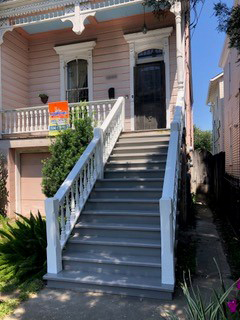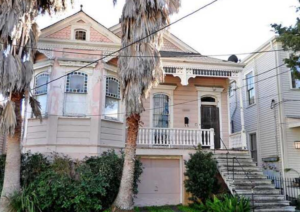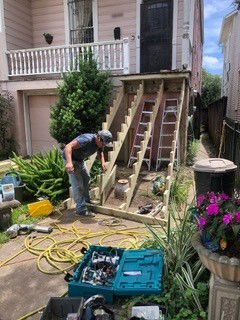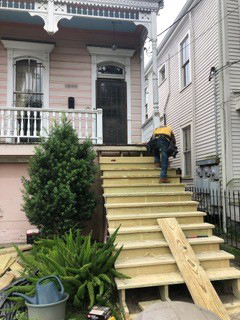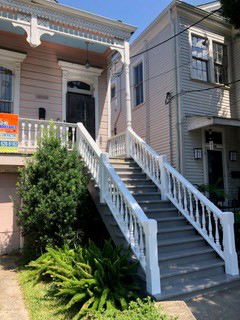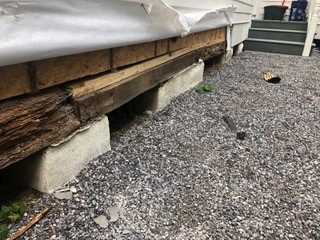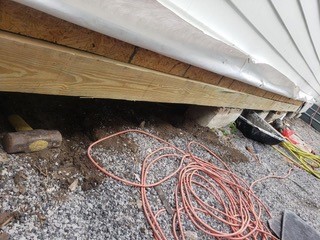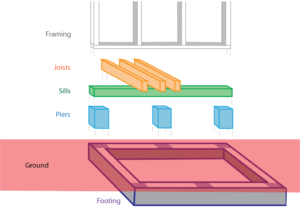In 2018, we got a request to repair a foundation at a small home in New Orleans’ St. Roch neighborhood. The house was in poor condition when the owner purchased it, and she restored the home by herself little by little, replacing siding, adding windows and railings, putting in a new fence, and painting the exterior. It was a pretty impressive transformation! But before she worked on the interior, the owner asked us to take a look at the foundation.
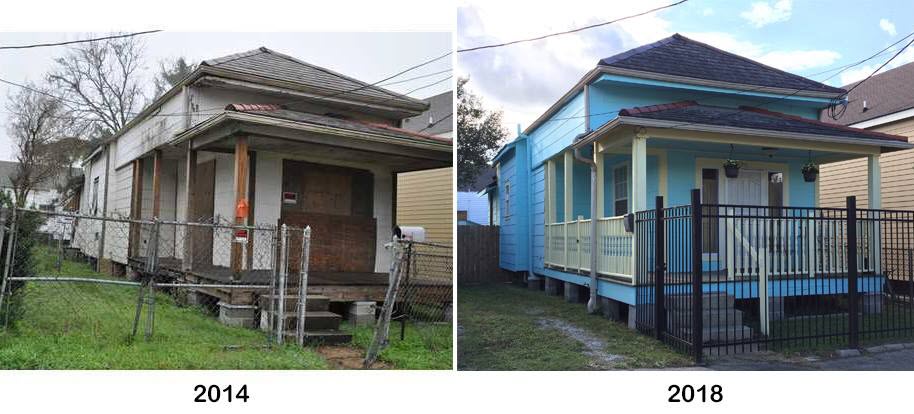
For this home, the sills were in good condition, but the piers needed work. The house, which is less than 900 sq. ft. in size, had shifted on its piers due to flooding during Hurricane Katrina in 2005, and the house no longer sat squarely on the piers. The owner asked if we could shift the house back, or move the piers. In a situation like this, the best option is to make new piers under where the house currently sits.
Richard Earls Construction replaced the piers, as shown in the photo on the right. While it’s easy to see that the new piers look more solid and clean, what isn’t so visible is that many of the original piers were crumbling, and some even included wood pieces. Wood in piers is a big no-no because wood gives ground termites an easy avenue to come right up into your house. The new all-cement piers deter termites, as do the slate pieces on top of the piers.
We jacked up the house and went to work, replacing each pier, including a few piers running down the center of the house. The home’s new piers are part of a solid foundation that will serve the home for years to come. While we’re impressed with how the new owner transformed this former eyesore into a pretty home (and so are her neighbors!) we’re even prouder that when she sold the house in 2019, the home inspection report came back with an A+ report on the foundation. The buyers were a young couple purchasing their first home, and understandably, they were nervous about getting their first mortgage. The clean report on the foundation gave them the confidence to move forward with the purchase.
These are the kinds of happy endings we love to hear. Let Richard Earls Construction take a look at your foundation so we can give you the same peace of mind while adding value to your home.
